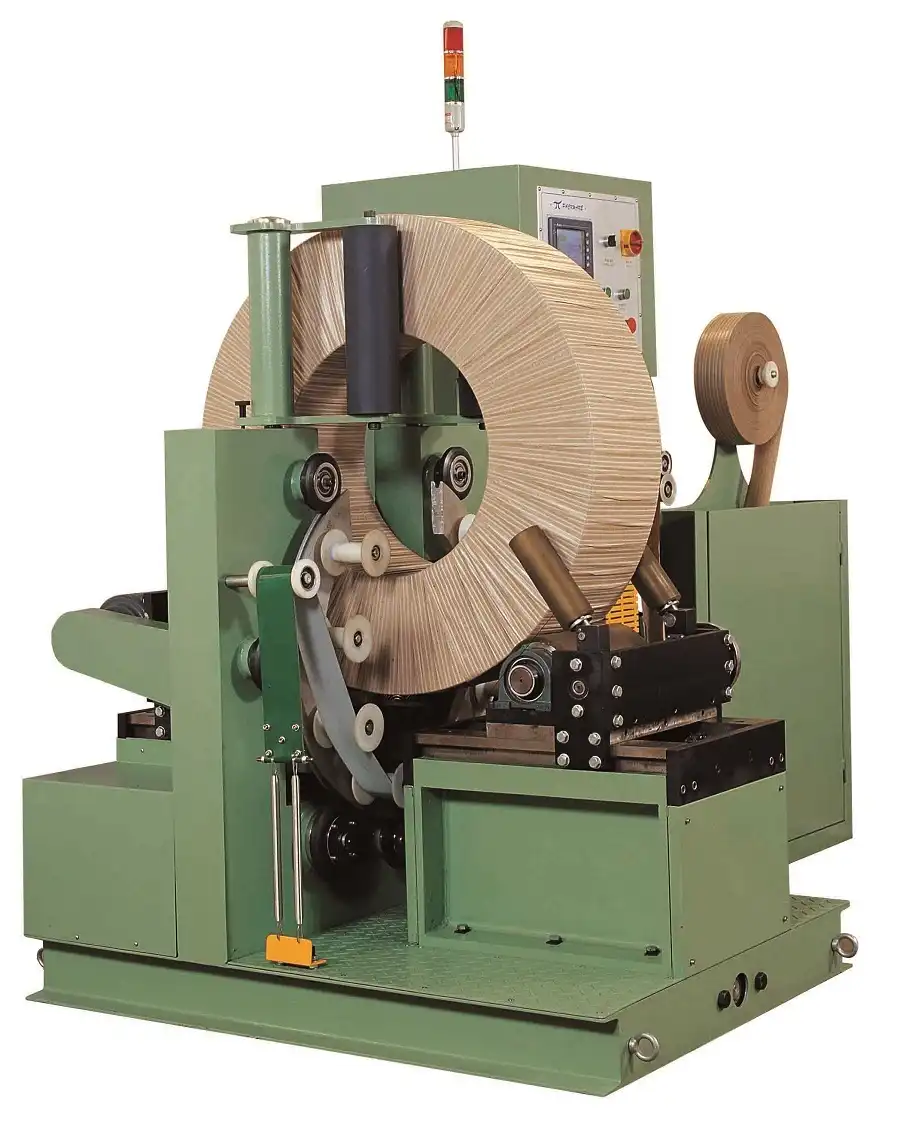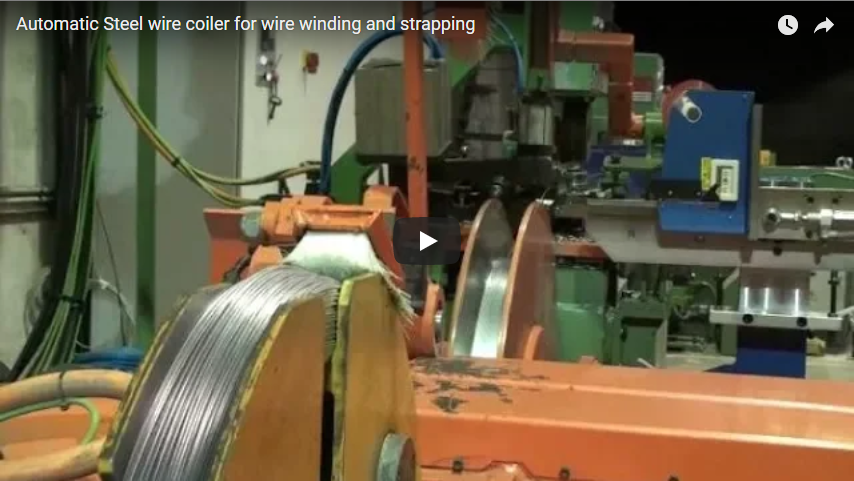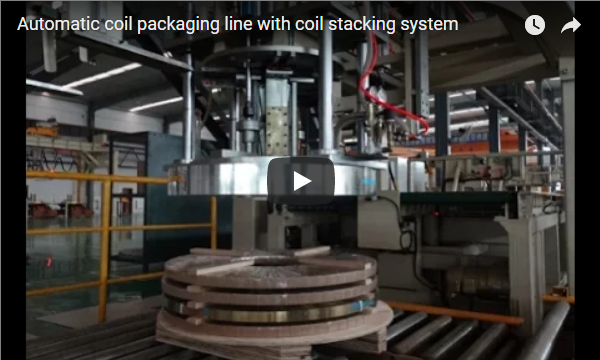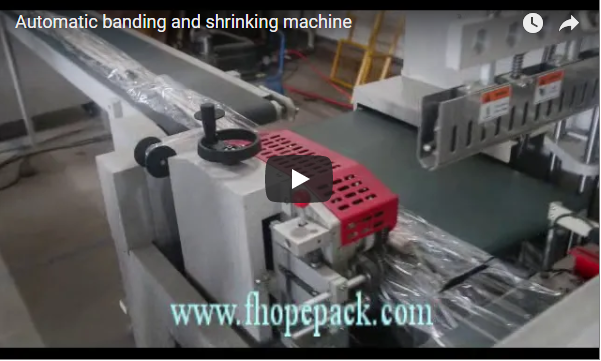Streamlining Operations: Best Practices for Vertical Steel Coil Packaging
Handling and packaging slit steel coils presents unique challenges in the metal fabrication and distribution industry. Ensuring product integrity, maintaining operational efficiency, and safeguarding workers requires robust processes. Manual packaging methods can be labor-intensive, inconsistent, and pose ergonomic risks. Implementing automated solutions is a key best practice for modern operations seeking to overcome these hurdles.
Below is a look at how advanced automated systems, like the Fhope vertical coil packaging line, address these critical needs:
1. The Challenge: Protecting Vulnerable Slit Coils
Slit coils, especially those made of steel, aluminum, or copper, are susceptible to several forms of damage post-slitting:
- Physical Damage: Sharp edges can cause self-inflicted damage or pose handling risks. Improper stacking or securing can lead to coil collapse or edge deformation during transit.
- Corrosion: Exposure to moisture and atmospheric contaminants can quickly lead to rust or oxidation, compromising material quality.
- Handling Inefficiencies: Manually wrapping large, heavy coils is time-consuming and physically demanding, creating bottlenecks in the production flow.
Addressing these issues effectively is paramount for reducing waste, ensuring customer satisfaction, and maintaining profitability.

2. Automated Vertical Packaging: A Solution Embodied
The Fhope automatic slitting coil packing line represents a state-of-the-art approach to vertical coil packaging, directly tackling the challenges mentioned above. This type of system automates the critical steps from coil reception to final protective wrapping.
- Process Flow: Typically, slit coils are automatically fed or placed onto the system. The machine then securely holds the coil in a vertical orientation (eye-to-sky) and applies protective packaging materials using an automated wrapping sequence, often involving an orbital wrapping head. Once wrapped, the coil is discharged, ready for storage or shipment.
- Fabricator's Insight: From practical experience, the transition from manual or semi-automatic methods to a fully automated vertical line like this brings immediate benefits. Consistency in wrap tension and material overlap, difficult to achieve manually, becomes standard. This significantly reduces the chance of moisture ingress or abrasion damage during handling.
3. Key Features Aligning with Best Practices
Automated vertical packaging systems incorporate features that directly support best practices in coil handling:
-
Best Practice: Ensuring Product Integrity
- Material Application: These systems precisely apply various high-quality packaging materials crucial for protection:
- Stretch Film: Provides containment, stability, and a barrier against dust and minor moisture. Automated application ensures consistent tension and overlap.
- VCI Paper/Film: Volatile Corrosion Inhibitor (VCI) materials release vapors that form a protective molecular layer on the metal surface, preventing rust and corrosion even in humid conditions. Automated wrapping ensures full coverage.
- Polyethylene (PE) Foam/Other Protective Layers: Can be incorporated to provide cushioning against impacts and prevent surface scratching.
- Vertical Orientation: Packaging coils eye-to-sky can simplify handling and potentially reduce floor space requirements compared to eye-to-the-wall orientations.
- Material Application: These systems precisely apply various high-quality packaging materials crucial for protection:
-
Best Practice: Maximizing Throughput and Efficiency
- Speed: Automation drastically increases packaging speed compared to manual methods. The Fhope system, for example, boasts speeds of 20-30 coils per hour (depending on coil size and wrapping requirements).
- Flexibility: Advanced systems can often handle multiple strips or coils of varying sizes and widths sequentially with minimal changeover time, adapting to diverse production runs. This eliminates bottlenecks often seen in manual packing stations.
- Reduced Labor: Automation frees up personnel from strenuous and repetitive manual wrapping tasks, allowing them to focus on higher-value activities.
-
Best Practice: Enhancing Operator Safety
- Ergonomics: Eliminates the need for manual lifting, bending, and stretching associated with wrapping heavy coils, significantly reducing the risk of musculoskeletal injuries.
- Integrated Safety Features: Modern lines are equipped with essential safety components:
- Emergency Stop Buttons: Easily accessible for immediate shutdown.
- Automatic Fault Detection: Sensors monitor operations and halt the system if issues arise, preventing damage to the machine or product.
- Interlocking Guards: Physical barriers prevent access to moving parts during operation.
4. Technical Specifications Overview
Understanding the machine's capabilities is crucial for integration:
- Packing Mode: Vertical (Eye-to-Sky)
- Coil Outer Diameter (OD): 700mm - 1400mm
- Coil Inner Diameter (ID): 508mm - 610mm (Common industry standards)
- Packing Speed: 20-30 coils per hour (Application Dependent)
- Control System: Typically PLC-based for reliable automation and potential integration with plant-level systems.
- Packaging Materials: Compatible with stretch film, VCI paper/film, PE foam, etc.
(Note: Specific requirements regarding footprint, power supply, and compressed air usage should be confirmed based on the exact model and configuration.)
5. Integrating Automation into Your Workflow
An automatic vertical coil packaging line is most effective when seamlessly integrated into the overall production flow. This often involves automated conveyors feeding coils from the slitter and transporting wrapped coils to staging or shipping areas. From a management perspective, the consistency and reliability offered by automation simplify planning and forecasting. The reduction in packaging-related damage also translates directly to bottom-line savings and improved customer relations.

Conclusion
Streamlining steel coil packaging operations through automation is no longer just an option; it's a competitive necessity. Systems like the Fhope automatic vertical coil packing line embody best practices by enhancing product protection, boosting operational efficiency, and improving workplace safety. By investing in such technology, metal fabricators and service centers can ensure their valuable slit coil products reach their destination in optimal condition, while simultaneously optimizing their internal workflows.
For more detailed information or specific application queries:
info@fhopepack.com






